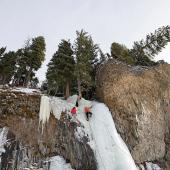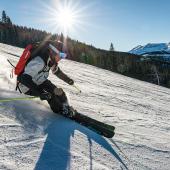The Wild Things
Montana's watchable wildlife and where to find them.
Montana is a wildlife hotbed. Unless you’re from the Serengeti, the wildlife-viewing opportunities around here probably surpass anything you’ve seen before. Any given hike can produce half a dozen megafauna sightings, and all the major species seen by Lewis and Clark are still around. Here are some of the usual suspects.
Deer
Hike, bike, run, or ride any mountain trail between Big Timber and Dillon, and you’ll likely see mule deer. Their ubiquity doesn’t make them any less impressive. These ungulates are built for mountain travel. Tell them apart from white-tailed deer by their black-tipped tails, donkey-like ears, and hopping gait. Whitetail tend to stick to the agricultural lowlands, and when spooked, their fluffy white tails flare straight up as they bound away.
Elk
While it’s rare to see elk on the trail, it does happen, especially if you hike in the sage-flecked meadows of Yellowstone Park. More likely, you’ll see huge herds on your way to and from the trailhead, often grouped on private land in the valleys, safe from hunters’ bullets. Dawn and dusk, fall, winter, and spring are the best times to spot elk, and Paradise and Madison valleys are both full of them.
Birds of Prey
Eagles, falcons, and hawks enliven Montana’s big, blue sky, and fall is an excellent time to observe them in huge numbers. Many hawk species migrate along the Bridger Range in October, so hike up to the ridge and bust out the binos. Along our many rivers and streams, look for bald eagles, a formerly endangered species that has made a huge comeback. Out in the open fields, hawks and falcons perch on power poles and fencelines, looking for rodents scurrying through the grass.
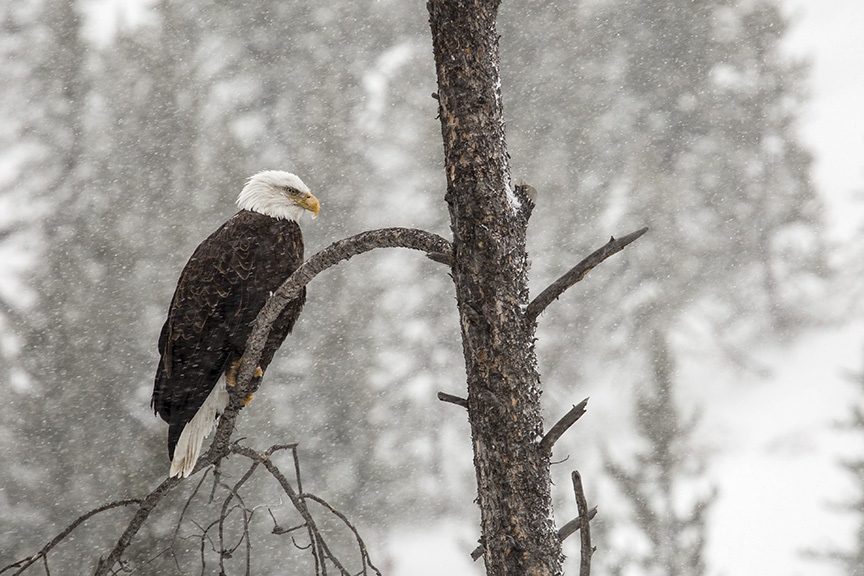
Canines
Foxes and coyotes are fairly common sights around these parts. They’re similar in size, but the former’s bright-orange coat makes it unmistakable. While folks new to town might see coyotes as majestic wildlife, many locals see them as a nuisance. Still, watching one lope across an open field as the sun sets on the mountains is a sight to behold. Wolves are far less common, especially outside Yellowstone Park. Inside the Park, if your goal is to see Canis lupus, head in early and follow the naturalist tour-guide vans. The Lamar Valley is a good bet.
Small Mammals
Small critters get much less fanfare, but they’re worth mentioning. A few standouts are marmots, pikas, and gophers (aka, Richardson’s ground squirrels). Marmots are fairly common in the alpine, and you can find them by following their high-pitched chirps. Their call is a warning cry, and they’ll start screaming as soon as you’re on their radar. Pikas are far less common, and indeed, they’re in trouble, due to warming temps. They occupy large rock clusters and if you spot large splotches of white droppings, odds are a pika is inside. Gophers are the pigeons of southwest Montana. From spring through mid-summer, they’re everywhere and no local would fault you for picking off one or two with a pellet gun.
Ursines & Felines
The “coolest” animals are usually the toothiest. Around here, that means bears, cougars, bobcats, and lynx. Our area has good populations of grizzly and black bears, but odds of seeing a grizzly are pretty low outside of Yellowstone. Black bears are far more common. Tell them apart by the shape of their faces and the telltale hump above the griz’s shoulder. Bobcats are also fairly common, but far stealthier than bears. For one, they’re much smaller—about the size of a medium-sized dog—and they tend to stalk their prey silently, whereas bears are primarily scavengers, wandering around from smell to smell in search of their next meal. Cougars and lynx are extremely hard to see in the wild. Their stealth is unrivaled in the animal kingdom, and if you see one, count yourself among the lucky few.
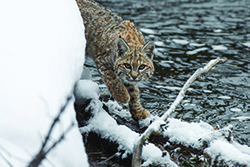 |
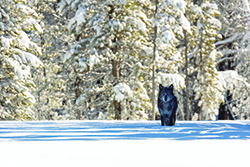 |












